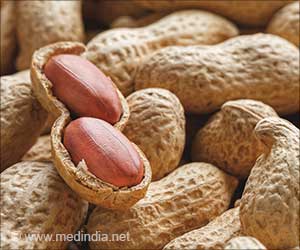ASU researchers develop a sterilization method using X-ray irradiation to reduce cancer-causing aflatoxin in corn, offering a promising solution for safer crops.

X-ray Irradiation Reduces Live Aspergillus flavus Viability but Not Aflatoxin B1 in Naturally Contaminated Maize
Go to source). In a new study published in Toxins, scientists introduced a promising sterilization technique using X-ray irradiation to reduce Aspergillus flavus viability in contaminated corn. The method sterilizes the fungus without degrading the dangerous aflatoxin B1.
‘#Aflatoxin poisoning is serious! Symptoms include liver damage, nausea, vomiting. Long-term exposure linked to #livercancer. Protect yourself by being aware of contaminated foods. #foodsafety’





X-Ray Irradiation: A Game-Changer in Aflatoxin Control
A breakthrough has emerged from Arizona State University. Researchers have successfully employed X-ray irradiation to eliminate Aspergillus flavus from contaminated corn without affecting the aflatoxin itself. This innovative approach offers a promising solution to a global challenge.By disabling Aspergillus flavus, the method stops the fungus from transmitting spores and producing more aflatoxins. This is crucial to allowing more laboratories to join the fight against fungal toxin prevention and control.
Stabilizing toxin levels allows scientists to develop and test additional remediation techniques that target aflatoxin degradation without the complication of ongoing fungal growth.
Results showed that a small dose of radiation shut down the fungal growth of Aspergillus flavus.
This work is part of a larger effort from Arizona State University researchers and international partners, supported by the National Institutes of Health, to identify low-cost approaches to mitigate Aflatoxin transmission and exposure among marginalized communities.
Advertisement
Glesener is a graduate research assistant in the Biodesign Center for Health Through Microbiomes and a biological design PhD student in ASU’s School for Engineering of Matter, Transport and Energy.
Advertisement
Aflatoxins are a type of mycotoxin, which are naturally occurring toxic compounds produced by molds or fungi that can grow on a variety of crops. Mycotoxins, including aflatoxins, have potent carcinogenic properties.
Aflatoxins are produced by Aspergillus species and are commonly found in crops including corn, cottonseed and nuts, particularly in warm and humid environments where mold thrives. Aflatoxin-producing fungi can contaminate crops at various stages, including in the field, during harvest and while in storage.
Aflatoxin contamination is a significant global concern, especially in humid, tropical and subtropical regions. It is most prevalent in Africa, Asia and parts of South America, where warm conditions can jump-start the growth of Aspergillus species.
Aflatoxin Poisoning
The International Agency for Research on Cancer classifies aflatoxins as Group 1 carcinogens, scientifically proven to cause cancer in humans. Chronic exposure can also lead to stunted growth in children and immunosuppression, increasing susceptibility to infectious diseases.The World Health Organization estimates that aflatoxins contribute to approximately 5% to 28% of global cases of liver cancer, with the highest burden in sub-Saharan Africa, Southeast Asia and China. Every year, aflatoxin exposure is estimated to cause 25,000 to 155,000 liver cancer deaths worldwide. Further, the effects of aflatoxin exposure, even at lower levels, are more severe in animals.
Climate change is believed to exacerbate the threat posed by aflatoxins by expanding the geographic range of aflatoxin-producing fungi, potentially increasing contamination risks in new regions. Additionally, the economic burden caused by aflatoxin contamination is considerable, particularly in the developing world.
The main objective of the study, led by corresponding author and Assistant Research Professor Lee Voth-Gaeddert, was to determine the optimal irradiation dose needed to eliminate fungal viability while preserving aflatoxin B1 concentrations for subsequent detoxification studies.
These results open new avenues for safely handling and researching contaminated food products without compromising the structural and chemical properties essential for scientific analysis. It can hopefully lead to new approaches for scalable and effective solutions to mycotoxin contamination applicable across various regions, particularly in developing countries where food safety measures are often limited.
Reference:
- X-ray Irradiation Reduces Live Aspergillus flavus Viability but Not Aflatoxin B1 in Naturally Contaminated Maize - (https://www.mdpi.com/2072-6651/16/8/329)
Source-Eurekalert















